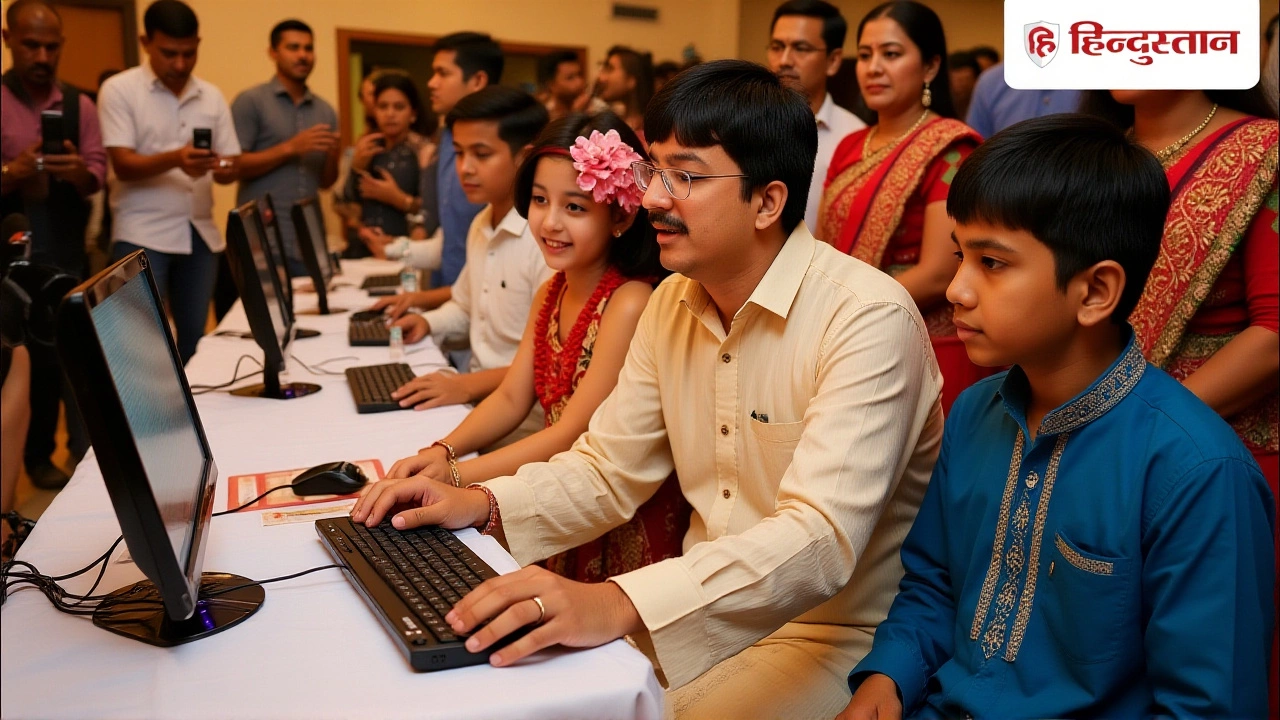When National Stock Exchange (NSE) and Bombay Stock Exchange (BSE) confirmed a special one‑hour Muhurta Trading window for 21 October 2025, investors across India are already eyeing the auspicious timing that follows Diwali and Lakshmi Puja. The market will be closed on 20 October for the festival, then reopen just long enough for a 60‑minute session from 1:45 p.m. to 2:45 p.m. IST – a shift from the usual evening slot that raises eyebrows and optimism alike.
Why a Special Session Matters
The tradition of holding a Muhrata‑timed trading window dates back to the early 1990s, when brokers noticed a surge in buying activity during the auspicious moments of Lakshmi Puja. Historically, the session ran after the regular market close, but the NSE and BSE decided this year to move it to daylight hours, citing better market visibility and smoother settlement.
According to Rohit Sharma, senior analyst at Motilal Oswal, “The daylight slot aligns with the majority of retail traders who still follow traditional rituals at home. We expect participation to be 15‑20 % higher than last year’s evening session.”
Exact Timetable for the Holiday Week
- 20 Oct 2025 (Monday): Diwali and Lakshmi Puja – market closed.
- 21 Oct 2025 (Tuesday):
- 1:15 p.m. – 1:30 p.m.: Block‑deal window.
- 1:30 p.m. – 1:45 p.m.: Pre‑opening session.
- 1:45 p.m. – 2:45 p.m.: Special Muhurta Trading session.
- 2:55 p.m. – 3:05 p.m.: Closing session.
- 22 Oct 2025 (Wednesday): Full market holiday – no trading across any segment.
- 23 Oct 2025 (Thursday): Regular trading resumes for equities, derivatives, SLB, currency, commodity, and electronic gold receipts.
Both exchanges have reiterated that only the one‑hour window will be active on the 21st; all other segments will remain shut.
Market Expectations and Data Points
Last year’s Muhrata session saw an average turnover of ₹3.8 billion, roughly 12 % above the daily average for a typical Tuesday. Analysts project this year’s figure could breach the ₹4.5 billion mark, especially after a bullish run in the Nifty 50 during September.
Ananya Ghosh, portfolio manager at HDFC Mutual Fund, added, “Retail investors treat the Muhrata window almost like a ritual. When the auspicious time aligns with a positive market sentiment, we often see a quick rally that can set the tone for the rest of the week.”
Historical data shows that on days following a Muhrata session, the Nifty index has closed higher in 7 out of the last 10 instances – a pattern that, while not causal, fuels the belief in good‑omen trading.
Investor Sentiment and Behavioral Angles
Beyond hard numbers, the cultural veneer plays a big role. A 2023 survey by the Securities and Exchange Board of India (SEBI) found that 62 % of small‑cap investors consider the Muhrata timing when placing orders. For many, it’s less about profit and more about honoring tradition.
Interestingly, the shift to a daytime slot might attract a new cohort of first‑time investors who are uncomfortable staying up late for a one‑hour window. “I’ve been waiting for a day like this,” says Ritu Patel, a 28‑year‑old software engineer from Bengaluru. “The market being open during the afternoon feels more manageable with my work schedule.”

Potential Risks and Regulatory Viewpoint
The NSE and BSE have issued a joint advisory reminding participants that the special session will follow the same risk‑management protocols as a regular trading day. Margin requirements, price‑band limits, and order‑cancellation rules remain unchanged.
SEBI’s director of market operations, Vikram Malhotra, cautioned, “While the cultural sentiment is strong, investors should not let it override due diligence. Volatility can spike in a compressed time frame, so prudent positioning is essential.”
Looking Ahead: Will the Day‑time Slot Stick?
Both exchanges are treating this year’s experiment as a pilot. If turnover and participant satisfaction exceed expectations, we may see the daylight window become the new norm. That would mark a significant departure from the old‑school evening tradition that began in the pre‑digital era.
For now, traders have a clear cue: prepare orders before 1:30 p.m., keep an eye on the pre‑opening price discovery, and be ready to act when the clock strikes 1:45 p.m. The rest of the week’s market dynamics will likely hinge on how that one hour unfolds.
Frequently Asked Questions
Why is the market closed on Diwali?
Diwali is one of India’s biggest festivals, and the Bombay Stock Exchange and National Stock Exchange observe it as a public holiday to allow traders and investors to celebrate with their families. The closure has been standard practice for decades.
What exactly is a Muhrata Trading session?
It is a one‑hour trading window timed to an auspicious ‘muhurta’ (astrological moment) that follows Diwali. Historically, it was held after regular market hours; this year it has been moved to the afternoon to align with retail traders’ schedules.
Who can trade during the special session?
All members of NSE and BSE—brokers, institutional investors, and retail traders—are eligible, provided they have pre‑authorized trading limits for the session. The block‑deal and pre‑opening windows allow participants to set up orders before the main hour begins.
What impact does the Muhrata session usually have on the market?
Data from the past ten years shows a tendency for the Nifty 50 to close higher after the Muhrata hour, especially when broader sentiment is bullish. However, the short window can also trigger sharp volatility if order flow is imbalanced.
Will there be any changes to fees or settlement rules for this session?
No. The NSE and BSE have confirmed that all standard transaction charges, clearing‑house fees, and settlement cycles remain the same as on a regular trading day. Only the session length differs.
